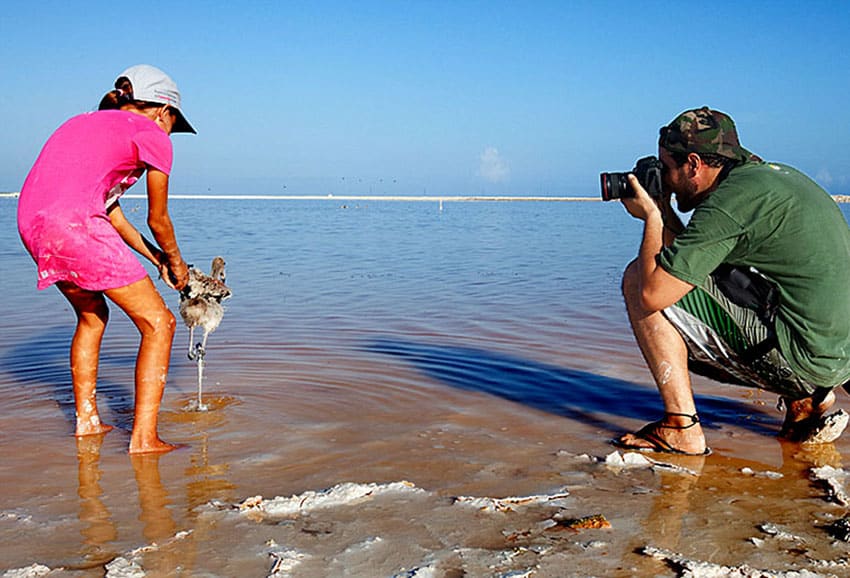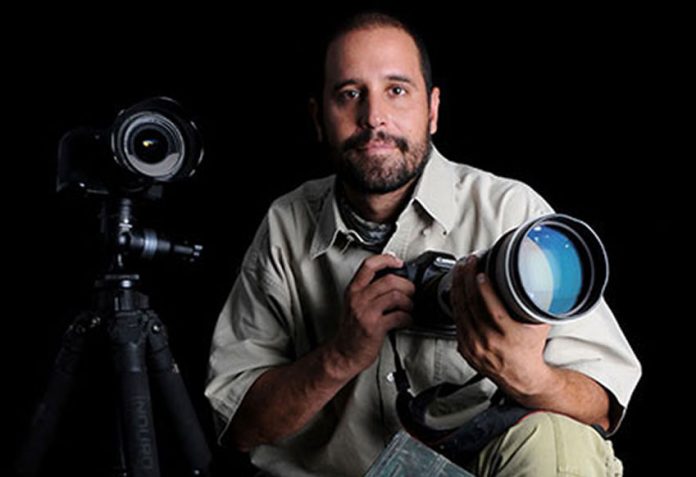My mind is reeling. I set off — a few hours ago — to investigate why my friend Manfred Meiners just won the excellence award presented yearly by the International Union for the Conservation of Nature (IUCN) to one — and only one — person thought to have contributed the most among this renowned organization’s thousands of members in North America.
And the prize goes to — a Mexican. Well, that could be a surprise to those who don’t know that Mexico is in North America, but the fact that it went to this particular Mexican conservationist is in no way surprising.
So why is my mind reeling? Because Google revealed Meiners’ name associated with so many ecologically sound projects that I’m no longer asking why he received that prize, but rather why he wouldn’t be the one to receive it. The people at IUCN certainly knew what they were doing.
Manfred Meiners is a cinematographer, a photographer and a scuba diver from Guadalajara, Mexico’s second largest city. A few days ago he was invited to Ottawa, Canada, where IUCN executives were meeting in preparation for their World Conservation Congress, held once every four years.
In case you are unfamiliar with its name, the IUCN is the group that maintains and updates the Red List of Threatened Species and has been the motor behind conservation projects for over 70 years.

“They told me they were giving me an award for the work I’ve done with them over the last 10 years in the fields of education and communication,” Meiners explained to me. “So they flew me to Canada, but I missed a connecting flight along the way, so I arrived in Ottawa really late and in my hotel I barely had a chance to take a shower.
“Then I had to make a decision: am I going to be on time or am I going to iron my shirt? Well, I decided being on time was more important, so I received the award with a wrinkled shirt, but with lots of warmth and good wishes from the members of IUNC. They gave me a wood carving (from certificate wood, of course) created by an indigenous artist in Chiapas name Pedro Jiménez: a beautiful piece which my family and I really love.
“It was an honor to receive a prize made by a paisano artist. This experience has really charged my battery to keep working on conservation issues.”
Over the years, Meiners has made numerous films documenting the success stories of humble communities which have learned to work with nature rather than against it. These films are, for the most part, narrated by local people deeply involved in a project, many of them campesinos whom Meiners has managed to put at ease for the camera.
Because I was asked to translate the subtitles of several of these documentaries into English, I had a good chance to see how conservation theory was being put into practice in the field, literally.
One of these documentaries is called Vive el Paisaje (Become One with the Landscape) and shows the practical application in the mountains of western Jalisco of a concept developed in France called the biocultural landscape. To see the English subtitles, click on “cc” at the bottom of the screen.

“The way we do farming now,” says a local man at the start of the film, “all this technification, this chaos, this overuse of insecticides and fertilizers . . . It’s impacting human life and harming wildlife too. We’re killing the Earth, but the Earth is our patrimony . . . so how can we be productive?”
The film goes on to present the concept of the biocultural landscape, “which combines the biological landscape with the culture of the communities that exist within that landscape, a policy tool which seeks the consensus of all the local stakeholders in a specific area.”
We then visit numerous communities, where we see agriculture, forest management and cottage industries flourishing in a sustainable way and without damage to the environment.
Another project where we see the hand of Manfred Meiners is called Albora. It is a response to the tendency of lugubrious headlines to dominate Mexico’s media, creating an atmosphere of gloom, cynicism or terror which simply does not jive with the joie de vivre of ordinary people living and working in every corner of the country.
One corollary of this zest for life is creativity for solving problems and I don’t just mean problems like how to get a 50-year-old jalopy back on the road. Mexicans are attacking real problems affecting the whole planet, like finding a harmless substitute for styrofoam, with as much imagination and creativity as environmentalists anywhere on the planet, and Albora is out to set the record straight.
This organization, founded in 2015, searches out and investigates environmental projects that really make a difference and helps activists publish their stories.

An example is Seeds of Change by Clara Migoya, which tells the story of The Mexican Network of Educational Gardens, a project that took root in 2018 in San Cristóbal de las Casas, Chiapas, and brings together students, teachers, parents, nutritionists, campesinos, academics and activists (just to name a few of the participants), all working together to reconnect the new generation with the natural world.
Migoya introduces us to Loreto, a teacher whose school garden is considered a landmark in San Cristóbal: “Loreto has a wide smile and a radiant face. While she showed me the garden she cultivates with ‘her children,’ I could hear the enthusiasm in her voice: ‘Here we raise worms, we observe insects and bees, we decide on seeds, we plant and we harvest.’
“Loreto tells me that for her students one of the most exciting things about the garden is harvesting what they grew and then cooking it. Once a month they all get together to prepare a breakfast. The boys and girls all participate in the same way, including cooking and cleaning up, something that may seem insignificant, but which represents a radical change from the patterns they are exposed to at home.”
Clara Migoya’s story — accompanied by gorgeous photos — can be found on Albora’s web page along with many other success stories that deserve to be told.
When I asked Manfred Meiners for one final example of one of his projects, he said, “Alright, you know how everyone dreams of bringing back extinct species? Well, in a way we have managed to do that . . .”
Meiners went on to tell me the story of the tequila splitfin, a little fish that, for a while, was listed on the IUCN Red List as extinct in its native environment, “but is now back thanks to the efforts of a lot of good people at Michoacán University.”
That story is too long to tell here, but watch for it soon on Mexico News Daily.
The writer has lived near Guadalajara, Jalisco, for more than 30 years and is the author of A Guide to West Mexico’s Guachimontones and Surrounding Area and co-author of Outdoors in Western Mexico. More of his writing can be found on his website.
[soliloquy id="89890"]
